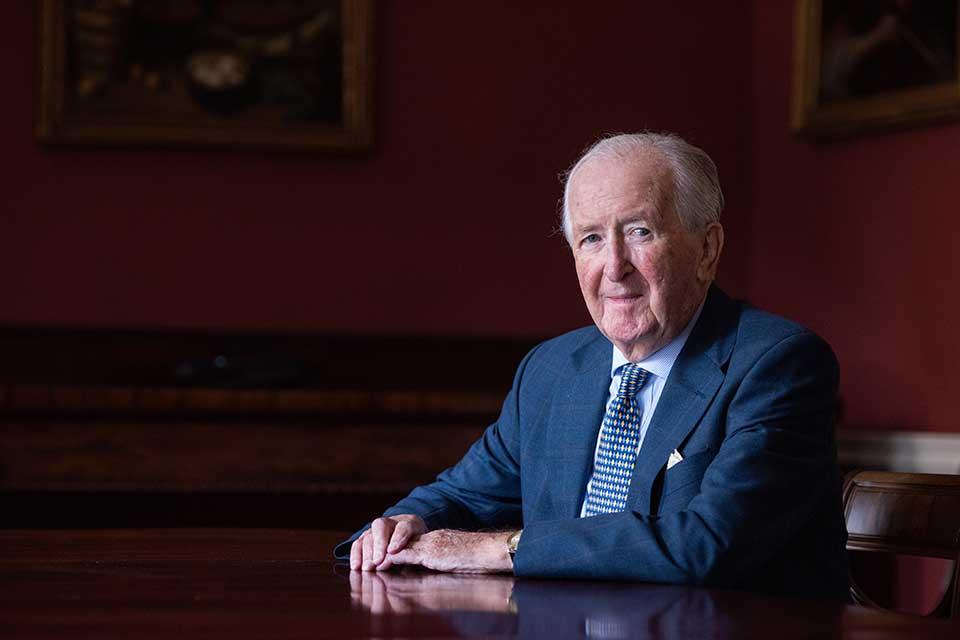It is with great sadness that we share the news of the death of Bill Hayes; he passed away peacefully on 16 March aged 94. William Hayes FInstP Hon MRIA was a much-loved figure in the Department of Physics and at St John’s College and the wider University; he will be greatly missed by many.
Bill was born in County Kerry, Ireland, and was the first person in his family to go to university. He completed his honours degree in physics at University College Dublin and stayed there to do a PhD in high-resolution molecular spectroscopy, travelling to Oxford in 1955 to complete a second PhD under the supervision of Brebis Bleaney, joining Brebis’ college, St John’s, as a research student. Bill moved to Argonne National Laboratory in 1957, later commenting that he had 'no expectation that I would ever return. I assumed that, like many Irishmen before me, I would make a career in Chicago.' But in 1958, Bleaney invited Bill back to Oxford to take up a research fellowship. He became a Junior research fellow at St John’s College, and was quickly promoted to a tutorial fellowship.
Bill’s research in the Clarendon initially used the methods of electron paramagnetic resonance, developed by Bleaney’s group, but he later branched out into other experimental techniques, including infrared spectroscopy, Raman scattering, and ultraviolet spectroscopy. These experiments were all carried out in the Clarendon Laboratory, but he also sent members of his research group outside Oxford to perform experiments at synchrotrons and muon sources. He was one of the first people to realise the remarkable implications of Soviet physicist Lev Landau’s ideas of self-trapping, in which carriers or excitons become localised due to electron-phonon coupling. Bill studied the implications of these ideas in oxides and halides, with his edited book Crystals with the Fluorite Structure (OUP, 1974) becoming the standard reference in this field. His expertise in crafting lucid prose was again in evidence in two co-authored books, The Scattering of Light by Crystals (Wiley 1978, with Rodney Loudon) and Defects and Defect Processes in Mon-Metallic Solids (Wiley 1985, with Marshall Stoneham).
In his later career, Bill’s research focus shifted again, this time to colossal magnetoresistance, conducting polymers and organic metals, where once again the ideas of self-trapping turned out to be relevant. By this time, a great deal of his time was taken up with administrative responsibilities: he was appointed Bursar of St John’s College in 1977, served as Head of the Clarendon Laboratory from 1985-1987, and was President of St John’s College from 1987-2001. Throughout this time, and well into his retirement, he remained engaged in research in the physics department, a regular attendee of seminars and, particularly, at the Clarendon common room for morning coffee, always keen to talk to new research students and postdocs and find out what they were up to. His colleagues remember Bill with great fondness and as an immensely kind and warm man, interested in people, always cheerful and full of amusing anecdotes.
Our thoughts are with Bill’s family and friends; those wishing to share memories of Bill and offer their condolences, can do so via an online book of condolence.
A Requiem Mass will be held at the Oxford Oratory at 11am on Tuesday 8 April. All are welcome. This will be followed by a private family burial. There will be a reception after the funeral in St Giles House. If you wish to attend, please email presidents.pa@sjc.ox.ac.uk.

